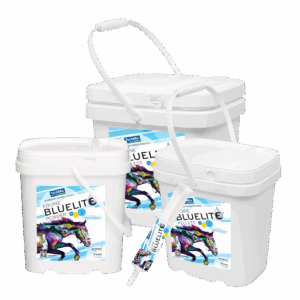June 20, 2025
Clinical Veterinary Perspective: Equine Hydration
People’s awareness of proper hydration and its relationship to good health is at its all-time high. Over the years, hydration products have gone from maybe getting some Pedialyte at the pharmacy if the doctor needed to help your sick and dehydrated child, to the early days of enhancing athletic performance with Gatorade. Today, most households strongly consider adding an electrolyte packet to their bottle of water, or drinking a bottle of their favorite electrolyte sports drink a near daily essential. Not because they are sick, although that usage is just as relevant today as it was in years past, but to optimize health and wellness. Our animals are not far behind this movement. Veterinarians often administer intravenous, subcutaneous, or oral/nasogastric tube fluids into animals for numerous indications as part of a sick animal’s treatment. These days a common recommendation is the administration of oral electrolytes as preventative health and wellness aides for our animals as well.
As a veterinarian, I often am treating conditions where suboptimal hydration is part of the problem… either as a contributing factor on how the horse got sick in the first place, or as a result of the sickness. For instance, an uncomplicated colic event could have been a result of having too little water intake, and the feed consumed became too thick or dry somewhere within the gastrointestinal tract. In this event the intestines themselves got a little dry, secretions decreased, and things got “sticky” and slow or outright stuck. Conversely, the animal may have been consuming water but lost more than it could replace due to a diarrhea condition, or extreme heat/sweat/evaporation for example. Although the administration of intravenous fluids in an urgent situation can do wonders, the better option is oral electrolyte administration when possible. Fluids administered directly into the gastrointestinal tract allow for systemic absorption as nature intended. Fluids lubricate the contents of the ingested feed and enable the nutrients and minerals to dissolve for rapid absorption across the intestinal lining and into circulation. This proper distribution at the cellular level, allows for the efficient passage of dietary waste products. “Dilution is the solution to pollution” is a timeless adage for biologic systems like ours and our horses. Abundant hydration allows the body’s digestive system to:
- dissolve and eliminate toxins and metabolic waste through urine and feces
- produce enough sweat to cool the body
- maintain an ample circulating blood volume for proper circulation and organ perfusion
- facilitate countless biochemical functions within the various body systems

These are a few of the reasons why the foundation of maintaining or reestablishing a state of wellness is proper hydration and why I recommend Equine BlueLite® oral hydration to my clients. They can choose from powder, pellets, or jel, making it easy to accommodate what works best for that owner/horse combination. I suggest using it any time there’s heat stress, transport stress, reluctance to drink enough water, when travelling, or when experiencing different water sources. Varying levels of athletic activity, a high work load… even cold weather, or anytime the horse just isn’t inclined to consume as much water as they should; all are good conditions for hydration treatment with BlueLite.
